Question
Who among the following sits to the immediate right of
A? Answer the questions based on the information given below. Eight persons A, B, C, D, E, F, G and H are sitting around a square table facing towards the center of the table. Four persons are sitting along the sides of the table while four are sitting at the corner of the table. The one who are sitting along the sides of the table like different colours i.e. Black, White, Red and Green and the one who are sitting at the corner of the table like different fruit i.e. Banana, Apple, Grapes and Papaya. A sits third to the left of the one who likes Papaya. E likes Green and sits to the immediate right of F, who does not like Papaya. G sits opposite to the one who likes Black. D sits to the immediate left of B. The one who likes White sits to the immediate right of the one who likes Grapes. G is an immediate neighbor of the one who likes Apple. H sits second to the right of C, who likes Banana.Solution
A sits third to the left of the one who likes Papaya. E likes Green and sits to the immediate right of F, who does not like Papaya. Case I: When F sits second to the left of the one who likes Papaya. 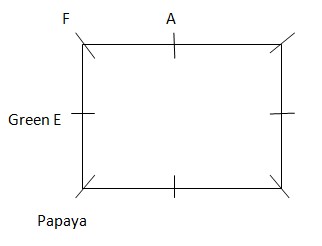 Case II: When F sits 2nd to the right of the one who likes Papaya.
Case II: When F sits 2nd to the right of the one who likes Papaya. 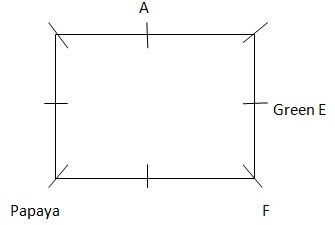 G sits opposite to the one who likes Black. G is an immediate neighbor of the one who likes Apple. Case I: When F sits 2nd to the left of the one who likes Papaya.
G sits opposite to the one who likes Black. G is an immediate neighbor of the one who likes Apple. Case I: When F sits 2nd to the left of the one who likes Papaya. 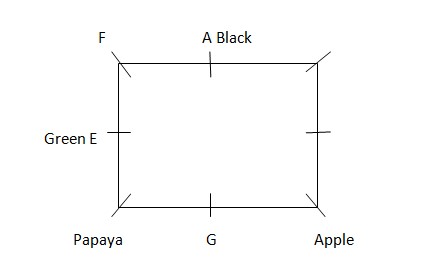 Case II: When F sits 2nd to the right of the one who likes Papaya.
Case II: When F sits 2nd to the right of the one who likes Papaya. 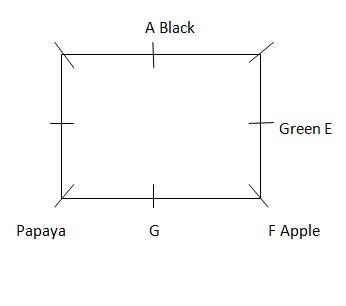 D sits to the immediate left of B. The one who likes White sits to the immediate right of the one who likes Grapes, which is not possible in case I so, case I is invalid. H sits second to the right of C who likes Banana. The final arrangement is as follows:
D sits to the immediate left of B. The one who likes White sits to the immediate right of the one who likes Grapes, which is not possible in case I so, case I is invalid. H sits second to the right of C who likes Banana. The final arrangement is as follows: 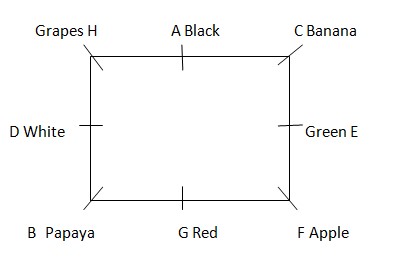
If 15th step of a given input be ‘the service would be from midnight to noon’, what would be the input
...If step IV of an input is ‘the knee joint of animal to see remains’, what is the step III of that input?
Which element is third to the left of second element from the right end in step IV?
Given the following input ‘This disease is not common in the world, what would be the VIth step?
Which of the following elements is third to the left of the 10th element from the left in Step III?
How many elements are there between ‘03’ and ‘45’ in step-II?
How many steps are required to complete the rearrangement of the given input?
If following is the second step for an input, what will be the fourth step?
Step II: 46 122 343 48 56 212 415
If the entry code of Batch C on Tuesday (2nd May, 2017) was “the user can also over ride bionic hand control", then what was the entry ...
Input: he does not even claim that motifs
Which of the following steps will be the last but one?
Relevant for Exams:



